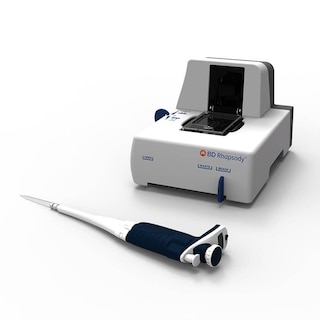-
Your selected country is
Middle East / Africa
- Change country/language
Old Browser
This page has been recently translated and is available in French now.
Looks like you're visiting us from {countryName}.
Would you like to stay on the current country site or be switched to your country?
![Oligo Mouse Anti-Mouse IgM[a]](/content/dam/bdb/products/global/reagents/single-cell-multiomics-reagents/bd-abseq-assay/940xxx/9401xx/940197_base/940197_01.png)
![Oligo Mouse Anti-Mouse IgM[a]](/content/dam/bdb/products/global/reagents/single-cell-multiomics-reagents/bd-abseq-assay/940xxx/9401xx/940197_base/940197_01.png)
Oligo Mouse Anti-Mouse IgM[a]
Regulatory Status Legend
Any use of products other than the permitted use without the express written authorization of Becton, Dickinson and Company is strictly prohibited.
Preparation And Storage
Recommended Assay Procedures
Put all BD® AbSeq Reagents to be pooled into a Latch Rack for 500 µL Tubes (Thermo Fisher Scientific Cat. No. 4900). Arrange the tubes so that they can be easily uncapped and re-capped with an 8-Channel Screw Cap Tube Capper (Thermo Fisher Scientific Cat. No. 4105MAT) and the reagents aliquoted with a multi-channel pipette.
BD® AbSeq tubes should be centrifuged for ≥ 30 seconds at 400 × g to ensure removal of any content in the cap/tube threads prior to the first opening.
Product Notices
- This reagent has been pre-diluted for use at the recommended volume per test. Typical use is 2 µl for 1 × 10^6 cells in a 200-µl staining reaction.
- The production process underwent stringent testing and validation to assure that it generates a high-quality conjugate with consistent performance and specific binding activity. However, verification testing has not been performed on all conjugate lots.
- Please refer to bd.com/genomics-resources for technical protocols.
- Caution: Sodium azide yields highly toxic hydrazoic acid under acidic conditions. Dilute azide compounds in running water before discarding to avoid accumulation of potentially explosive deposits in plumbing.
- Source of all serum proteins is from USDA inspected abattoirs located in the United States.
- Illumina is a trademark of Illumina, Inc.
- Please refer to http://regdocs.bd.com to access safety data sheets (SDS).
- For U.S. patents that may apply, see bd.com/patents.
Companion Products






The DS-1 antibody reacts specifically with mouse IgM of Igh-C[a] and related haplotypes (e.g., BALB/c, C58, CBA, C3H/Bi, C3H/He, DBA/1, DBA/2). It does not react with IgM of Igh-C[b], Igh-C[e], or related hapltypes (e.g., C57BL, SJL, A, AKR, NZB). DS-1 antibody does not react with free µ heavy chain in vitro or in the cytoplasm of pre-B lymphocytes, which lack Ig light chain. It has not been shown to stimulate B-cell proliferation.
Development References (2)
-
Sieckmann DG, Stall AM, Subbarao B. A mouse monoclonal antibody specific for an allotypic determinant of the Igha allele of murine IgM: genetic and functional analysis of Igh-6a epitopes using anti-IgM monoclonal antibodies.. Hybridoma. 1991; 10(1):121-35. (Immunogen: Activation, ELISA, Functional assay, Immunofluorescence). View Reference
-
Stall AM. Mouse immunoglobulin allotypes. In: Herzenberg LA, Weir DM, Blackwell C, ed. Weir's Handbook of Experimental Immunology. Blackwell Science Publishers; 1996:27.1-27.16.
Please refer to Support Documents for Quality Certificates
Global - Refer to manufacturer's instructions for use and related User Manuals and Technical data sheets before using this products as described
Comparisons, where applicable, are made against older BD Technology, manual methods or are general performance claims. Comparisons are not made against non-BD technologies, unless otherwise noted.
For Research Use Only. Not for use in diagnostic or therapeutic procedures.
Report a Site Issue
This form is intended to help us improve our website experience. For other support, please visit our Contact Us page.